What Is an Electric Transformer? A Beginner’s Guide to Power Conversion?
Have you ever wondered how electricity from power plants reaches your home safely? The answer lies in a device you’ve probably never thought about: the electric transformer. This unsung hero of our power grid is essential to modern life.
An electric transformer is a device that changes the voltage of electrical power without altering its frequency. It enables efficient power transmission over long distances and safe use in homes and businesses by stepping voltage up or down as needed.
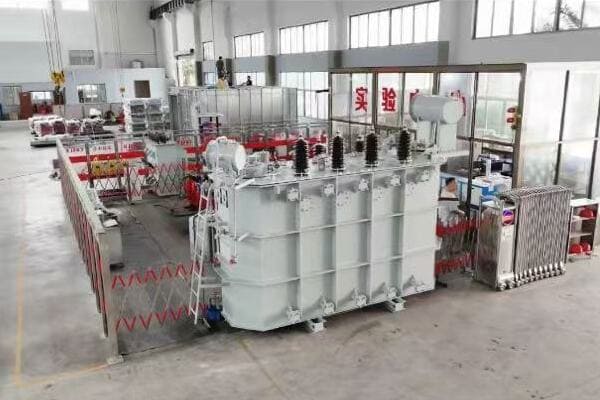
As an electrical engineer with years of experience in power systems, I’ve seen firsthand how crucial transformers are to our daily lives. In this article, I’ll break down the basics of transformers, explaining how they work and why they’re so important in our modern world.
The Basics of Transformer Operation: Understanding Electromagnetic Induction?
Have you ever been puzzled by how transformers work their magic? The key lies in a principle called electromagnetic induction. It’s not as complicated as it sounds, and understanding it will unlock the mystery of transformer operation.
Transformers operate on the principle of electromagnetic induction. When an alternating current flows through one coil (primary), it creates a changing magnetic field. This field induces a voltage in another nearby coil (secondary), effectively transferring electrical energy between the two coils.
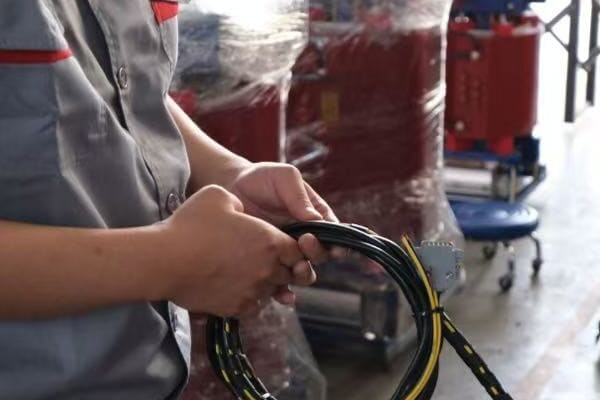
Let me take you through the fascinating world of electromagnetic induction and how it powers transformer operation. It’s a bit like a magic trick, but with science!
The Magic of Magnetic Fields
At the heart of transformer operation is the relationship between electricity and magnetism:
-
Changing Electric Current Creates Magnetic Field
- When electric current flows through a wire, it creates a magnetic field around it
- If the current is alternating (AC), the magnetic field constantly changes
-
Changing Magnetic Field Induces Electric Current
- When a changing magnetic field passes through a coil of wire, it induces a voltage in that coil
- This induced voltage can create a current in a closed circuit
This two-way relationship is the foundation of transformer operation.
How Transformers Harness Electromagnetic Induction
Here’s a step-by-step breakdown of how a transformer uses this principle:
-
Primary Coil Excitation
- AC power is applied to the primary coil
- This creates a changing magnetic field in the transformer core
-
Magnetic Field in the Core
- The core, usually made of iron, concentrates and directs the magnetic field
- This field is shared by both primary and secondary coils
-
Secondary Coil Induction
- The changing magnetic field induces a voltage in the secondary coil
- The magnitude of this voltage depends on the number of turns in the coils
The Importance of Alternating Current (AC)
Transformers only work with AC power. Here’s why:
- AC constantly changes direction
- This changing current creates a continuously varying magnetic field
- A steady DC current would only create a static magnetic field, which wouldn’t induce voltage in the secondary coil
I remember a student once asking why we don’t use transformers with DC power. It was a great opportunity to explain the crucial role of AC in transformer operation.
Factors Affecting Transformer Efficiency
Several factors influence how well a transformer performs its electromagnetic induction:
-
Core Material
- High-quality magnetic materials improve field strength
- Modern transformers often use silicon steel or amorphous metals
-
Coil Design
- The number of turns in each coil affects voltage transformation
- Coil geometry impacts efficiency and heat dissipation
-
Frequency
- Higher frequencies can allow for smaller, more efficient transformers
- But most power systems operate at fixed frequencies (50 or 60 Hz)
Real-World Applications
Understanding electromagnetic induction in transformers helps explain various applications:
- Power Distribution: Stepping voltage up for long-distance transmission and down for local use
- Electronics: Small transformers in chargers and adapters
- Industrial Equipment: Large transformers in manufacturing plants
Challenges and Innovations
While the basic principle remains the same, transformer technology continues to evolve:
-
Reducing Losses
- Core losses (hysteresis and eddy currents)
- Copper losses in windings
-
Improving Efficiency
- Advanced core materials
- Better cooling methods
-
Size and Weight Reduction
- High-frequency transformers for certain applications
- New designs for compact power supplies
Remember, every time you plug in a device or turn on a light, you’re benefiting from the principle of electromagnetic induction in transformers. It’s a testament to how fundamental scientific principles can have profound impacts on our daily lives.
Anatomy of an Electric Transformer: Key Components and Their Functions?
Ever looked at a transformer and wondered what’s inside that metal box? You’re not alone. The inner workings of a transformer can seem mysterious, but once you understand its key components, you’ll see how elegantly simple these devices really are.
An electric transformer consists of several key components: a primary coil, a secondary coil, a core, insulation, and a cooling system. Each part plays a crucial role in the transformer’s function of converting voltage levels while maintaining power integrity.

Let’s dive into the anatomy of a transformer. I’ll break down each component and explain its role, drawing from my years of experience designing and working with these essential devices.
The Heart of the Transformer: Coils and Core
Primary and Secondary Coils
The coils are where the electrical magic happens:
-
Primary Coil
- Receives input power
- Creates changing magnetic field
-
Secondary Coil
- Picks up the magnetic field
- Produces output power
The number of turns in each coil determines the voltage transformation ratio.
The Core: Magnetic Field Superhighway
The core is crucial for efficient operation:
- Material: Usually laminated steel or ferrite
- Function: Concentrates and directs magnetic field
- Design: Shaped to minimize losses
I once worked on a project where changing the core material improved efficiency by 2%. It might not sound like much, but in large power systems, it’s a significant saving.
Insulation: Keeping Things Separate and Safe
Proper insulation is vital for safety and efficiency:
-
Coil Insulation
- Prevents short circuits between turns
- Materials: Enamel, paper, or synthetic materials
-
Oil Insulation (in larger transformers)
- Provides both insulation and cooling
- Requires regular testing and maintenance
-
Air Gaps
- Used in some designs to control magnetic properties
Cooling Systems: Managing the Heat
Transformers generate heat, and managing it is crucial:
| Cooling Method | Typical Application | Advantages |
|---|---|---|
| Oil-Filled | Large power transformers | Excellent cooling, long life |
| Air-Cooled | Smaller distribution transformers | Simple, low maintenance |
| Dry-Type | Indoor or sensitive environments | No oil leakage risk |
In my early career, I worked on a project to retrofit an old oil-filled transformer with a modern cooling system. The improvement in efficiency and lifespan was remarkable.
Structural Components: Holding It All Together
These parts ensure the transformer’s integrity:
-
Tank or Enclosure
- Protects internal components
- Contains insulating oil in oil-filled types
-
Bushings
- Insulated passages for connections
- Critical for preventing flashovers
-
Tap Changers
- Allow for voltage adjustment
- Can be manual or automatic
Protective Devices: Ensuring Safe Operation
Safety is paramount in transformer design:
-
Pressure Relief Devices
- Prevent explosion in case of internal pressure build-up
-
Buchholz Relay (in oil-filled transformers)
- Detects gas accumulation or oil loss
- Can trigger alarms or shutdowns
-
Temperature Monitors
- Track winding and oil temperatures
- Prevent overheating damage
Monitoring and Control Equipment
Modern transformers often include:
- Sensors for temperature, pressure, and oil level
- Data loggers for performance tracking
- Smart controls for remote operation
Putting It All Together: How Components Interact
Understanding how these components work together is key:
- Power Input: Enters through primary bushings to primary coil
- Magnetic Field Generation: Primary coil creates field in core
- Power Transfer: Core transfers field to secondary coil
- Voltage Transformation: Secondary coil outputs different voltage
- Heat Management: Cooling system dissipates generated heat
- Safety Oversight: Protective devices monitor for issues
Innovations in Transformer Components
The field is constantly evolving:
- Advanced Core Materials: Amorphous metals for lower losses
- Solid-State Transformers: Using power electronics for more flexible voltage control
- Smart Monitoring: IoT integration for predictive maintenance
Remember, while the basic principle of transformers hasn’t changed much since their invention, the materials and technologies used in their components are constantly improving. This ongoing evolution ensures that transformers continue to meet the growing demands of our power-hungry world efficiently and safely.
Voltage Transformation Explained: Step-Up and Step-Down Processes in Power Distribution?
Have you ever wondered how electricity from a power plant can travel hundreds of miles and still safely power your home appliances? The secret lies in the voltage transformation capabilities of electric transformers. This process is fundamental to our entire power distribution system.
Voltage transformation in transformers involves step-up and step-down processes. Step-up transformers increase voltage for efficient long-distance transmission, while step-down transformers reduce voltage for safe local distribution and consumption. This process is crucial for minimizing power losses and ensuring electrical safety.
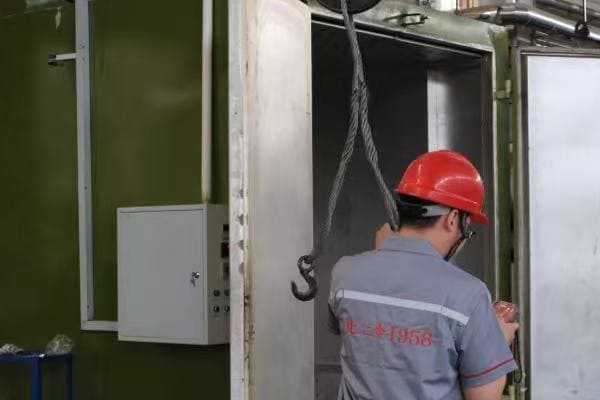
Let me walk you through the fascinating world of voltage transformation. As someone who’s designed and implemented transformer systems, I can tell you that this process is the backbone of our entire electrical grid.
The Basics of Voltage Transformation
At its core, voltage transformation is about the relationship between the number of turns in the primary and secondary coils:
- Step-Up Transformation: Secondary has more turns than primary
- Step-Down Transformation: Primary has more turns than secondary
The voltage ratio is directly proportional to the turns ratio:Voltage Ratio = Primary Voltage / Secondary Voltage = Secondary Turns / Primary Turns
Step-Up Transformation: Powering Long-Distance Transmission
Step-up transformers are crucial at power plants. Here’s why:
-
Increase Voltage for Transmission
- Typical generation voltage: 10-25 kV
- Transmission voltage: 100-765 kV
-
Reduce Current for Same Power
- Lower current means less power loss in transmission lines
- Power (P) = Voltage (V) × Current (I)
-
Enable Efficient Long-Distance Power Transfer
- High voltage allows power to travel hundreds of miles with minimal losses
I once worked on a project to upgrade a power plant’s step-up transformer. The new transformer increased transmission voltage from 230 kV to 500 kV, reducing transmission losses by over 30%.
Step-Down Transformation: Bringing Power to Consumers
As power gets closer to end-users, we need to step the voltage down:
-
Substation Transformers
- Reduce transmission voltage to distribution levels (typically 4-35 kV)
-
Distribution Transformers
- Further reduce voltage for residential use (120/240 V in the US)
-
Safety and Appliance Compatibility
- Lower voltages are safer for consumer use
- Household appliances are designed for these lower voltages
The Transformation Process: A Closer Look
Let’s break down what happens inside the transformer:
-
Primary Coil Excitation
- AC power creates changing magnetic field
-
Magnetic Field in Core
- Field strength proportional to primary current and turns
-
Secondary Coil Induction
- Changing field induces voltage in secondary coil
- Induced voltage proportional to turns ratio
Efficiency Considerations in Voltage Transformation
Transformers are highly efficient, but some losses occur:
| Loss Type | Cause | Mitigation |
|---|---|---|
| Core Losses | Hysteresis and eddy currents in core | Use of high-quality core materials |
| Copper Losses | Resistance in windings | Optimal winding design, larger conductors |
| Stray Losses | Leakage flux | Proper shielding and core design |
Modern transformers can achieve efficiencies over 99%, but even small improvements can lead to significant energy savings in large power systems.
Real-World Applications of Voltage Transformation
-
Renewable Energy Integration
- Step-up transformers for wind farms and solar plants
-
Industrial Power Supply
- Custom voltage levels for manufacturing processes
-
Electric Vehicle Charging
- Step-down transformers in charging stations
-
Smart Grid Technologies
- Transformers with on-load tap changers for voltage regulation
Challenges in Voltage Transformation
-
Voltage Regulation
- Maintaining consistent output voltage under varying loads
-
Harmonics
- Dealing with non-sinusoidal waveforms in modern power systems
-
Overloading
- Managing peak demands without compromising transformer life
Innovations in Voltage Transformation
The field is constantly evolving:
-
Solid-State Transformers
- Use power electronics for more flexible voltage control
-
Smart Transformers
- Incorporate sensors and controls for real-time adjustments
-
High-Temperature Superconducting Transformers
- Promise even higher efficiencies and power densities
Remember, every time you use electricity, you’re benefiting from a complex system of voltage transformations. From the power plant to your wall outlet, transformers work tirelessly to ensure that electricity is transmitted efficiently and used safely. It’s a testament to the ingenuity of electrical engineering and the importance of understanding these fundamental processes.
Types of Transformers: From Distribution to Power Electronics Applications?
Have you ever noticed the variety of transformers around you? From the large units in substations to the tiny ones in your phone charger, transformers come in many shapes and sizes. But what are the different types, and how do they serve various applications?
Transformers come in various types, each designed for specific applications. These include power transformers for bulk energy transfer, distribution transformers for local power supply, instrument transformers for measurement, and electronic transformers for low-power applications. Each type has unique characteristics suited to its role.
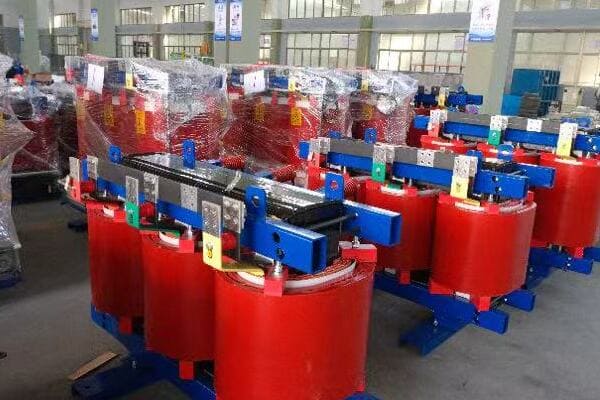
As someone who’s worked with a wide range of transformer types, I can tell you that understanding these differences is crucial for anyone involved in electrical systems. Let’s explore the main categories and their applications.
Power Transformers: The Backbone of Electrical Grids
Power transformers handle the heavy lifting in our electrical systems:
-
Step-Up Power Transformers
- Location: Power plants
- Function: Increase voltage for long-distance transmission
- Capacity: Can handle hundreds of MVA
-
Step-Down Power Transformers
- Location: Substations
- Function: Reduce voltage for distribution networks
- Features: Often equipped with tap changers for voltage regulation
I once worked on installing a 500 MVA transformer at a major substation. The sheer size and complexity of these units are awe-inspiring.
Distribution Transformers: Bringing Power to Consumers
These are the workhorses of local power distribution:
- Location: Neighborhoods, poles, or ground-mounted
- Function: Reduce voltage to levels suitable for homes and businesses
- Types:
- Pole-mounted (for overhead lines)
- Pad-mounted (for underground distribution)
Instrument Transformers: Precision in Measurement
These specialized transformers are crucial for monitoring and protection:
-
Current Transformers (CTs)
- Function: Measure high currents safely
- Applications: Metering, protection relays
-
Voltage Transformers (VTs) or Potential Transformers (PTs)
- Function: Step down high voltages for measurement
- Applications: Voltage monitoring, metering
Special-Purpose Transformers
These transformers serve specific industrial or commercial needs:
-
Isolation Transformers
- Function: Provide electrical isolation between circuits
- Applications: Medical equipment, sensitive electronics
-
Autotransformers
- Feature: Single winding acts as both primary and secondary
- Advantage: Smaller, lighter, and often more efficient
-
Three-Phase Transformers
- Function: Handle three-phase power systems
- Applications: Industrial power systems, large commercial buildings
Electronic Transformers: Powering Our Digital World
These small but crucial transformers are everywhere in modern electronics:
-
Flyback Transformers
- Function: Provide isolated power in switched-mode power supplies
- Applications: TVs, computer monitors
-
Audio Transformers
- Function: Couple audio signals between circuits
- Applications: High-fidelity audio equipment, telecommunications
-
Pulse Transformers
- Function: Transmit digital pulses while providing isolation
- Applications: Digital circuits, signal processing
I remember designing a custom pulse transformer for a high-speed data transmission system. The challenge of balancing signal integrity with isolation requirements was fascinating.
Comparison of Transformer Types
Let’s break down the key characteristics of different transformer types:
| Type | Size | Voltage Range | Efficiency | Key Feature |
|---|---|---|---|---|
| Power | Very Large | High (>33kV) | >99% | High capacity |
| Distribution | Medium | Medium (≤33kV) | 98-99% | Widespread use |
| Instrument | Small | Varies | N/A | High accuracy |
| Electronic | Very Small | Low (<1kV) | Varies | Compact design |
Specialized Transformers for Emerging Technologies
As technology evolves, new types of transformers are emerging:
-
Solid-State Transformers
- Function: Combine power electronics with traditional transformer principles
- Advantage: Offer more control over power flow and quality
-
Superconducting Transformers
- Feature: Use superconducting materials for windings
- Benefit: Extremely low losses and high power density
-
Smart Transformers
- Function: Incorporate digital monitoring and control capabilities
- Application: Key components in smart grid systems
Choosing the Right Transformer
Selecting the appropriate transformer type is crucial. Factors to consider include:
-
Power Requirements
- Voltage levels (input and output)
- Power capacity needed
-
Environmental Conditions
- Indoor vs. outdoor installation
- Temperature extremes
- Humidity and pollution levels
-
Space Constraints
- Available installation area
- Weight limitations
-
Regulatory Compliance
- Energy efficiency standards
- Safety regulations
-
Cost Considerations
- Initial investment
- Operational costs (efficiency, maintenance)
The Future of Transformer Technology
The field of transformer design is constantly evolving:
-
Integration with Renewable Energy
- Transformers designed for variable input from solar and wind sources
-
Improved Materials
- Development of new core materials for even higher efficiencies
-
Digital Twin Technology
- Virtual models for predictive maintenance and optimization
-
Eco-Friendly Designs
- Focus on biodegradable insulating fluids and recyclable materials
Remember, while the basic principle of transformers remains the same, the variety of types and ongoing innovations reflect the diverse and evolving needs of our electrical systems. From powering entire cities to charging your smartphone, transformers play a vital role in every aspect of our electrified world.
The Role of Transformers in Modern Power Systems: Efficiency, Safety, and Technological Advancements?
Have you ever wondered how our power systems manage to keep up with the ever-increasing demand for electricity? The answer lies largely in the continuous evolution of transformer technology. Transformers are not just passive components; they’re at the forefront of making our power systems more efficient, safe, and technologically advanced.
Modern transformers play a crucial role in enhancing power system efficiency, ensuring electrical safety, and enabling technological advancements. They incorporate smart technologies for real-time monitoring, use advanced materials for higher efficiency, and support the integration of renewable energy sources into the grid.
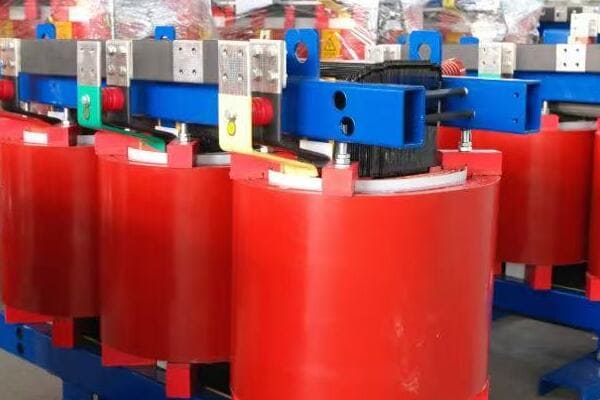
As someone who’s been involved in the development and implementation of transformer technologies, I can tell you that the role of transformers in modern power systems is more critical than ever. Let’s explore how these devices are shaping the future of electricity.
Efficiency: The Key to Sustainable Power Systems
Transformers are at the heart of efforts to improve overall power system efficiency:
-
Advanced Core Materials
- Amorphous metal cores reduce losses by up to 70% compared to traditional silicon steel
- Nanocrystalline materials promise even further improvements
-
Improved Winding Designs
- Optimized geometries reduce copper losses
- Use of high-temperature superconducting materials in experimental designs
-
Better Cooling Systems
- Advanced oil formulations for more effective heat dissipation
- Innovative cooling fin designs for air-cooled transformers
I once worked on a project replacing old transformers with new, high-efficiency models in a city’s distribution network. The energy savings were equivalent to powering several thousand homes!
Safety: Protecting People and Equipment
Modern transformers incorporate numerous safety features:
-
Arc Flash Mitigation
- Improved insulation systems
- Rapid fault detection and isolation
-
Fire Safety
- Use of less flammable insulating fluids
- Advanced fire suppression systems in large transformers
-
Environmental Protection
- Biodegradable oils to minimize environmental impact in case of leaks
- Better containment systems for oil-filled transformers
Technological Advancements: Smart Transformers for a Smart Grid
The integration of digital technologies is revolutionizing transformer capabilities:
-
Real-Time Monitoring
- Sensors for temperature, oil quality, and load
- Continuous health assessment and predictive maintenance
-
Smart Controls
- On-load tap changers for dynamic voltage regulation
- Integration with grid management systems for optimal power flow
-
Data Analytics
- Use of big data and AI for performance optimization
- Predictive modeling for asset management
Supporting Renewable Energy Integration
Transformers play a crucial role in integrating renewable energy sources:
-
Handling Variable Inputs
- Designed to manage fluctuating power from wind and solar sources
-
Bi-Directional Power Flow
- Enable power flow from distributed generation back to the grid
-
High-Frequency Operation
- Compact designs for offshore wind applications
Comparison: Traditional vs. Modern Transformers
Let’s look at how modern transformers stack up against their traditional counterparts:
| Aspect | Traditional Transformers | Modern Smart Transformers |
|---|---|---|
| Efficiency | Good (>98%) | Excellent (>99%) |
| Monitoring | Periodic manual checks | Continuous real-time monitoring |
| Control | Limited, often manual | Advanced, automated |
| Safety Features | Basic | Comprehensive |
| Grid Integration | Passive | Active, bi-directional |
Challenges and Future Directions
Despite advancements, challenges remain:
-
Cybersecurity
- Protecting smart transformers from cyber threats
-
Cost
- Balancing advanced features with economic viability
-
Retrofitting
- Upgrading existing infrastructure with new technologies
Future developments I’m excited about include:
-
Quantum Sensors
- Ultra-precise monitoring of transformer parameters
-
Self-Healing Materials
- Transformers that can repair minor damage autonomously
-
AI-Driven Optimization
- Transformers that adapt their operation in real-time based on grid conditions
Best Practices for Implementing Advanced Transformers
Based on my experience, here are some key considerations:
-
Holistic Approach
- Consider the entire power system, not just individual components
-
Lifecycle Cost Analysis
- Look beyond initial costs to long-term benefits
-
Phased Implementation
- Start with pilot projects to test new technologies
-
Workforce Training
- Ensure personnel are equipped to handle new technologies
-
Regulatory Engagement
- Work with regulators to update standards for new technologies
Remember, transformers are not just about converting voltages anymore. They are becoming intelligent, adaptive components of our power systems. As we move towards a more electrified and sustainable future, the role of transformers will only grow in importance. Their evolution is a testament to the ingenuity of electrical engineering and the critical role these devices play in powering our world safely and efficiently.
Conclusion
Electric transformers are fundamental to modern power systems, enabling efficient energy transmission and distribution. From basic operation principles to advanced applications, transformers continue to evolve, playing a crucial role in our increasingly electrified world.
Free CHBEB Transformer Catalog Download
Get the full range of CHBEB transformers in one catalog.
Includes oil-immersed, dry-type, pad-mounted, and custom solutions.
Quick Message
Request A free quote
We'd like to work with you
- +86 15558785111
- [email protected]
- +86 15558785111
What We Do
CHINA BEI ER BIAN (CHBEB) GROUP, with 218 million in registered capital, originated from Beijing Beierbian Transformer Group. Headquartered in Beijing for R&D, it operates major production bases in Nanjing and Yueqing, producing high-quality products.
Latest Product
address
BeiJing
No 3,RongJing East Road,BeiJing Economic Technological Development Area,BeiJing,China
JiangSu
No 7️Xiangfeng Road,Jiangning,NanJing,JiangSu,China
WenZhou
No.211, Wei 16 Road, Industrial Zone, Yueqing, Wenzhou, Zhejiang, China.
XiangYang Industrial Zone ,YueQing,WenZhou,ZheJiang,China
contact us
- [email protected]
- +86 13057780111
- +86 13057780111
- +86 15558785111
Copyright © Bei Er Bian Group


